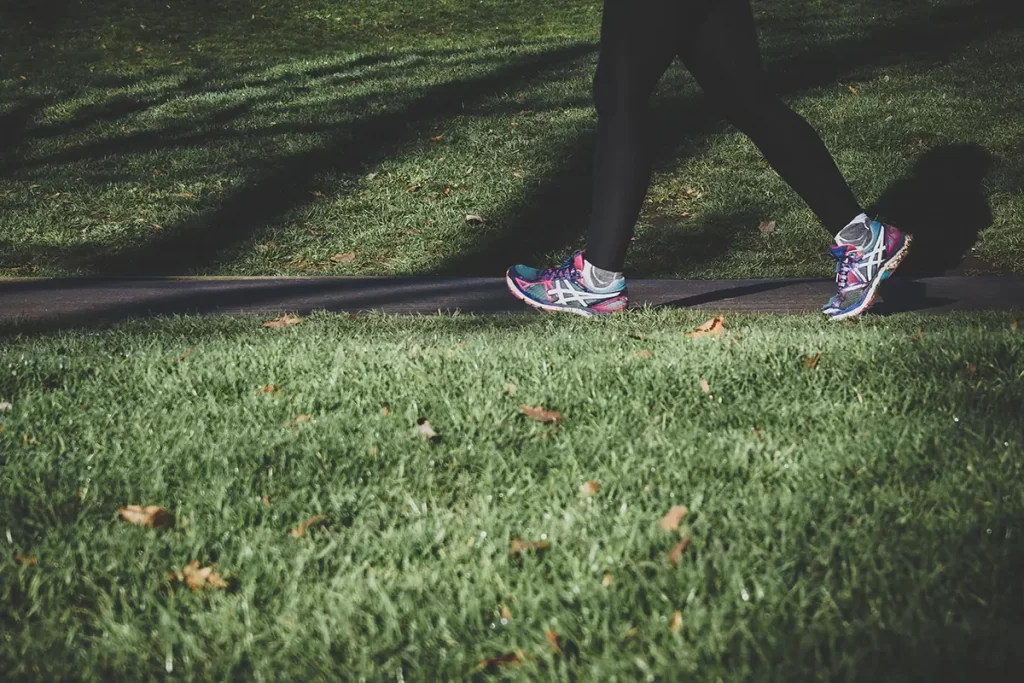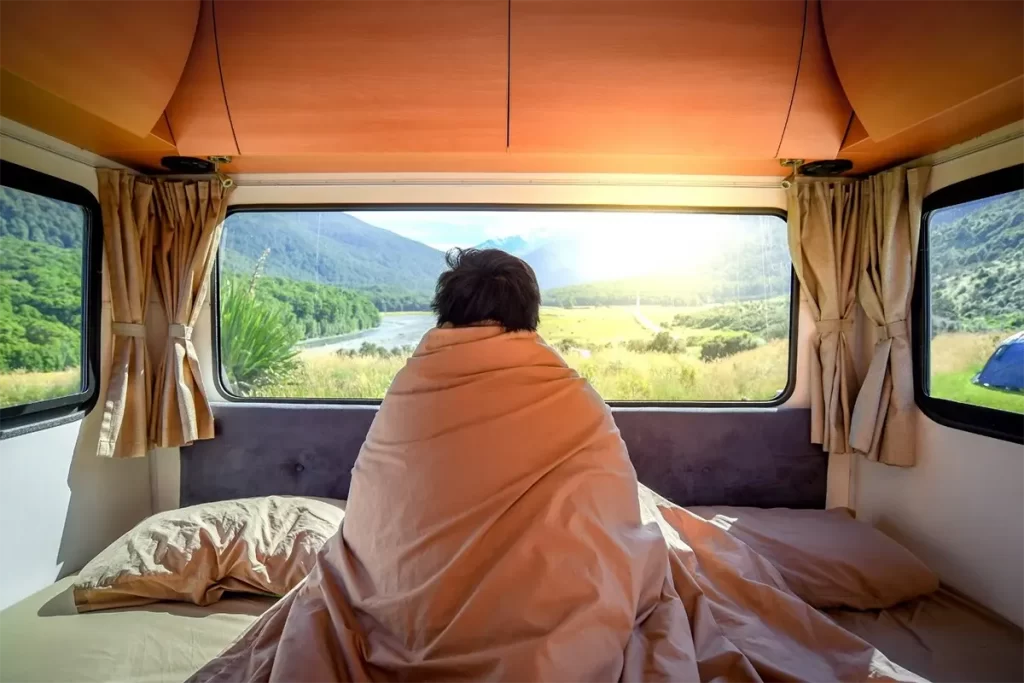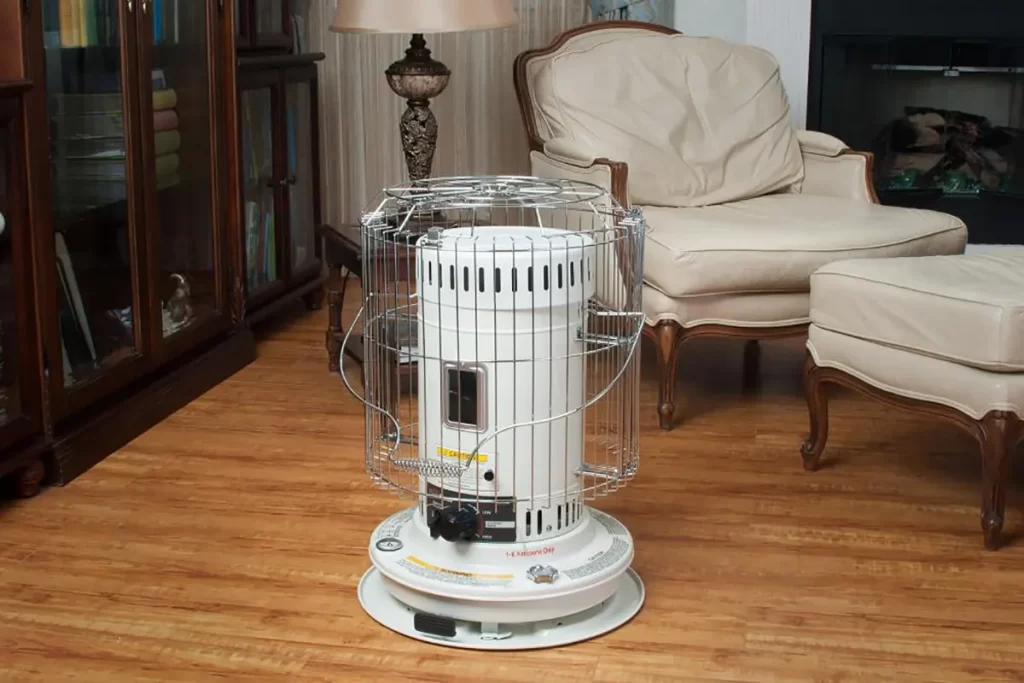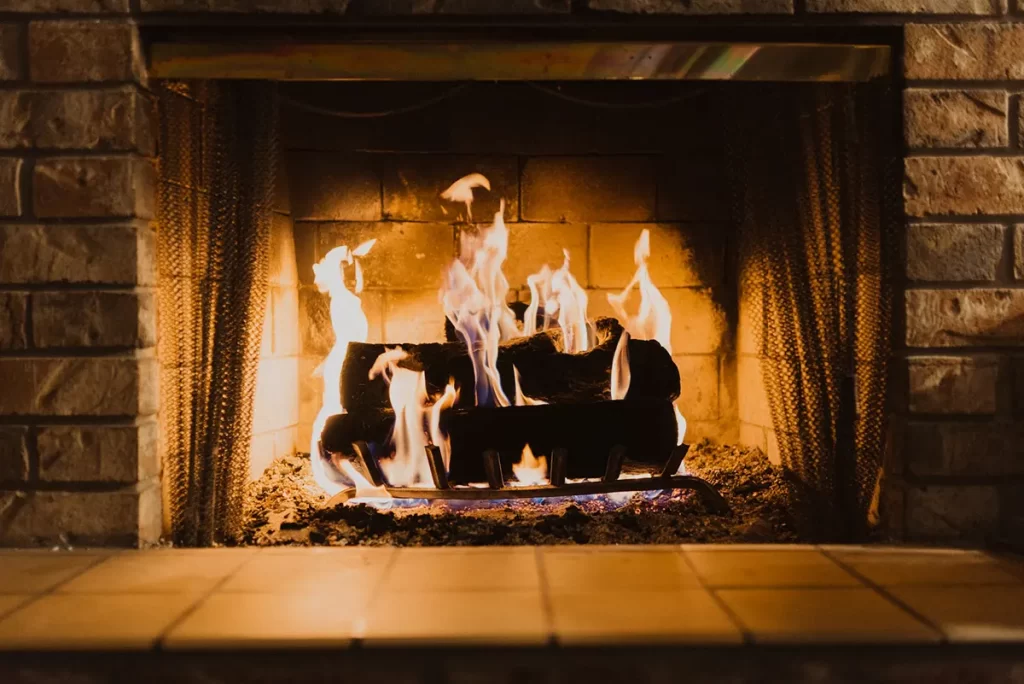Hypothermia is no joke. Getting exposed to extremely low temperatures can cause not just skin damage and frostbite but death as well. And the scariest part? You will only have a few minutes to survive when you get exposed to external temperatures reaching sub-zero.
To stay warm during power outages, you can dress in layers and wear insulated clothing, use a fireplace or wood stove, and utilize body heat. It’s also important to insulate windows and doors to prevent heat from escaping.
To know more about the ways you can keep yourself warm when there’s no electricity, read on.
Quick Navigation
Clothing

Clothing can help keep you warm by providing an extra layer of insulation and trapping body heat. However, for your safety, it’s important to stick with clothing items made from wool, fleece, and synthetic fabrics since not all clothing materials can help keep you warm.
Start with a thin base layer of wool, silk, or synthetic material like polyester. These materials will keep your skin dry and provide a lightweight layer of insulation during cold temperatures.
Add a mid-layer as it helps provide extra insulation. Plus, it can also help keep your body warm in case the first layer gets wet.
For the materials, stick with fleece and wool.
Your last layer should be made of waterproof and wind-resistant material. You can get either a synthetic insulated jacket or a lightweight down coat.
Remember to cover up with a scarf, hat, and gloves. These items can keep your neck, head, and hands warm. For your footwear, stick with thick socks and waterproof boots.
Activities
Carry babies and toddlers
Carrying infants or young children close to your body will keep them warm and comfortable. The human body generates heat, and carrying your child close to your chest can transfer your body heat to them, keeping them warm.
Using a carrier or wrap can make this more comfortable for both you and your child. This will not only keep your child warm, but it will also provide them a sense of safety and comfort at what could be a stressful moment.
Try a moderate workout
Exercise is a fantastic way to generate heat and keep warm. You don’t need electricity to get moving, and even a moderate workout can increase your body temperature.
Try doing some jumping jacks, squats, or lunges to get your blood flowing. Additionally, if you can access a set of weights or resistance bands, incorporate those into your workout for added resistance and heat production.
Drink something hot
Drinking hot beverages is a simple yet effective way to warm up from the inside out. A warm cup of tea, coffee, or hot chocolate can provide both physical and emotional warmth.
Plus, holding a warm mug or water bottle can be comforting and soothing. You can boil water over an open flame or use a camping stove if you don’t have access to a stove or kettle.
Cuddle with pets
If you have furry friends, cuddling up with them can provide warmth and comfort during a power outage. Just like carrying babies, snuggling up with your pets can transfer body heat and keep both of you warm.
If you have multiple pets, try to keep them close together to share body heat. This will not only keep you warm, but it can also make you and your dogs feel less stressed and anxious..
Move around

Staying sedentary can cause your body temperature to drop, so it’s important to keep moving. Even simple movements like stretching, walking around the house, or doing household chores can help generate heat and keep you warm.
If you have access to outdoor space, taking a walk or doing some light yard work can also help increase your body temperature.
Housing
Create a warm room

If it’s not possible to keep your entire home warm during power outages, pick one area you can turn into a “warm room”. This is the one room you go to when you’re looking for a comfortable place to stay in while it’s too cold outside.
Now, how do make a warm room?
Start with proper insulation. Make sure to install insulation for your ceilings and walls.
Get some warm blankets and rugs. These items aren’t just great for keeping your feet warm but trapping the heat inside your room too.
It’s a good idea to invest in heavy curtains as well. They can trap warm air inside the room and prevent cold air from entering.
Prevent heat loss
Heat loss generally happens when warm air escapes your home and cold air seeps in.
To prevent that, you can consider the following:
Seal drafts: Check your windows and doors for drafts and seal them with weatherstripping or caulking.
Add insulation: Insulation helps trap heat inside your home. Consider adding insulation to your walls, attic, and floors. Take note that different house types require different insulation types.
Take a look at the table below:
| House Type | Most Effective Insulation Types |
| Single-family homes | Fiberglass batts, blown-in cellulose, spray foam, or rigid foam |
| Apartments and Condos | Spray foam or blown-in cellulose |
| Older Homes | Loose-fill insulation or spray foam |
| Mobile Homes | Blanket insulation, foam board insulation or spray foam |
| Log Homes | Spray foam, blown-in cellulose, or fiberglass batts with vapor retarder |
| Coastal Homes | Closed-cell spray foam or rigid foam with vapor barrier |
Use curtains: Close curtains or blinds at night to prevent heat loss through windows.
Cover floors: If you have hardwood or tile floors, consider adding area rugs to help trap heat.
Keep doors closed: Keep doors to unused rooms closed to prevent heat from escaping.
Use door snakes: A door snake is a long, stuffed fabric tube that blocks drafts from coming in under doors.
Block off unused spaces: If you have an unused room, close the door and block off any vents to prevent heat loss.
Use a fireplace: If you have a fireplace, use it to heat your home. However, be sure to use caution and follow proper safety precautions.
Use candles: Candles can provide a small amount of heat and light during a power outage. Be sure to use them safely and keep them away from flammable objects.
Move out
If you are unable to keep your home warm and comfortable, moving out may become a last resort.
Car
Using your car as a shelter during a power outage can be a great option for staying warm, as cars are designed to provide insulation and can help trap heat.

To use your car as a shelter, park it in a safe location such as a well-lit parking lot, garage or driveway. Once you’re in the car, make sure to keep the windows closed and seal any gaps to prevent cold air from coming in. You can also use blankets, jackets, or any other warm clothing you have to keep yourself warm inside the car.
If you have a car charger, you can also charge your phone or other devices to stay connected and informed during a power outage. Just make sure to keep the car turned off to avoid carbon monoxide poisoning.
Find another location
Look for places that have electricity and can provide warmth during a power outage. Some places may have backup generators that can keep the lights and heat on even if the power goes out.
Make sure to plan ahead before the power goes out, so you know where to go and what to bring. Pack warm clothing, blankets, and any other essentials you may need.
It’s also a good idea to have a phone charger and any medications you may need with you. Let your friends and family know where you’ll be staying so they can check on you and make sure you’re safe.
Other Potential Heat Sources
Kerosene Heater

Kerosene heaters are portable devices that burn kerosene to produce heat. They are often used as a backup heat source during power outages. Consider using one if you have a well-ventilated space to use it in.
Solar heat
Solar heat is another potential heat source that you can use during a power outage. Solar panels can be used to capture the sun’s energy and convert it into heat to warm your home.

This option may require some setup and investment, but can be a sustainable solution in the long run.
Flower pot heater
A flower pot heater is a DIY option that you can make using just a few simple materials. It involves placing a candle inside a clay pot, and then covering the pot with another pot that’s turned upside down. The heat from the candle warms the air inside the pot, which is then radiated outwards.
Propane heater
Propane heaters run on propane gas and can be used to heat a small space. Make sure to use a propane heater in a well-ventilated area and follow all safety instructions. It’s also a good idea to have a carbon monoxide detector since it’s a colorless gas.
Start a fire
If you have access to wood, starting a fire can be a good option for heating your home during a power outage. You can use a fireplace, wood stove, or even an outdoor fire pit to generate heat.

Make sure to take all necessary precautions when starting a fire, such as using a fire screen and keeping flammable items away from the flames.
Gas-powered generator

A gas-powered generator can also be used as a backup power source during a power outage. While they’re not designed specifically for heating, some models can be used to power electric heaters or other heating devices.
Outdoor wood furnace
If you have an outdoor wood furnace, it can be used to heat your home during a power outage. Outdoor wood furnaces are typically located outside the home and are connected to a heating system that distributes the heat indoors.
Wood cook stove
Wood stoves can be used for both heating and cooking during a power outage. They’re designed to burn wood and can be used to heat a small space while also providing a cooking surface for preparing meals.
Conclusion
In summary, it is important to take precautions to stay warm without electricity during winter to avoid hypothermia and its associated risks. Some of the ways to stay warm without electricity include wearing warm clothing made of wool, fleece, and synthetic fabrics.
You can also carry babies and toddlers close to your body and drink hot beverages. Cuddling with pets, holding a warm water bottle and moving around can help too.
Additionally, creating a warm room by insulating, using heavy curtains and rugs, and preventing heat loss can help keep you warm. However, if you are unable to keep your house without electricity and make it comfortable, moving out may become a last resort.

Discover the best shooting suppliers, guns, barrels, lowers, scopes, triggers, ammo, and gear in the industry. We stay up to date on what is hot, what is great, and what fits every budget to bring you reviews and deep dives on all your favorite pieces of kit. You can decide what are the upgrades you want next and then go to our inhouse strategic partner Magcommander and purchase at some of the best prices on the internet.